This post may contain affiliate links. Read our disclosure policy.
I am frequently asked, “Can I reduce the sugar in this brownie recipe?” The answer is much more complicated than you might think!
Sugar is a crucial ingredient in baking, and, spoiler alert, it has many more responsibilities than simply sweetening a recipe.
I previously conducted sugar ratio experiments in sugar cookies (using my viral Soft & Chewy Sugar Cookies recipe) and more sugar experiments on my Control Cupcake Recipe, comparing the batches side-by-side with the original recipe. The results of each experiment were fascinating!
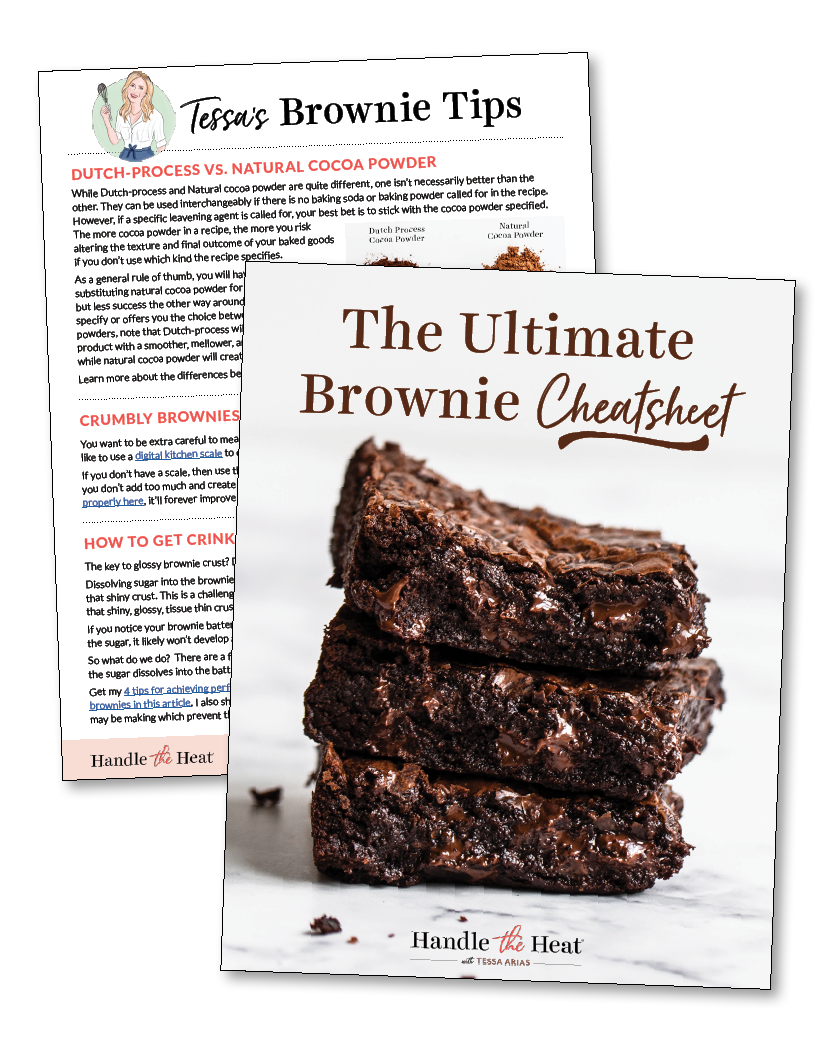
Free Brownie Cheatsheet!
Frustrated with blah brownies? This cheatsheet has everything you need—from essential tools to foolproof tips plus two crave-worthy recipes—to help you master perfect brownies every time!
I decided to take to the kitchen once more and experiment with my crazy-popular Best Ever Chewy Brownies recipe, to see how changing the sugar levels would impact the results of these perfectly chewy brownies.
Check out the experiment results below, along with some baking science insights into sugar’s surprising role in baking brownies.
Quick disclaimer: This post is intended to give insight into the science of sugar’s role in baking. It is not intended to serve as a guide for people who must reduce sugar intake due to medical diagnoses or for weight loss. Here at Handle the Heat, we use sugar, dairy, eggs, and wheat in the majority of our recipes and fully believe dessert is a delightful part of enjoying life!

Sprinkle of Science
Reducing Sugar in Brownies
What Does Sugar Do in Baking?
You might be thinking, “Sugar just sweetens” – but sugar actually does much more beyond simply sweetening your favorite recipes. Here are some of the other important factors sugar contributes:
- Moisture: Sugar is a key component in lending moisture to baked goods. It attracts and binds with the water content of your dough or batter to lock in moisture. This also helps extend shelf life, meaning your baked goods will stay moist and fresh for longer.
- Tenderness: Sugar helps provide a tender texture in baked goods.
- Leavening: When creamed with butter, sugar can also help leaven recipes like cakes and cupcakes for a light and fluffy texture. In some recipes, sugar also increases spread. This doesn’t apply to our brownie recipe, however.
- Caramelization: Sugar is crucial in the process of browning and caramelizing. This is how your baked goods develop their golden brown color and, in some cases, crisp exterior.
Sugar’s Role in Brownies
Sugar works with the other ingredients in brownies to contribute moisture, height, fudginess, and that crinkly crust on top, as well as providing sweetness. This is why altering the sugar in a recipe can have consequences beyond the sweetness of the bake.
Experimenting with Sugar Levels in Brownies
We took to the kitchen, armed with my Best Ever Chewy Brownies recipe, to demonstrate the effects of decreasing the amount of sugar in the recipe by 50% and increasing the sugar by 25%. The exact same recipe was used for each batch, baked at the same temperature, for the same amount of time, in the same pan – the only difference between batches was the amount of sugar used.
The control recipe was made exactly as written and baked for 30 minutes, yielding brownies that were chewy, slightly fudgy, chocolaty, and delicious. They had a decent height to them and a nice chocolate color. There was a beautifully thin and shiny brownie crust on top, which can only develop when there’s enough dissolved sugar in a brownie batter. These brownies were described by everyone in the studio as “perfect.”
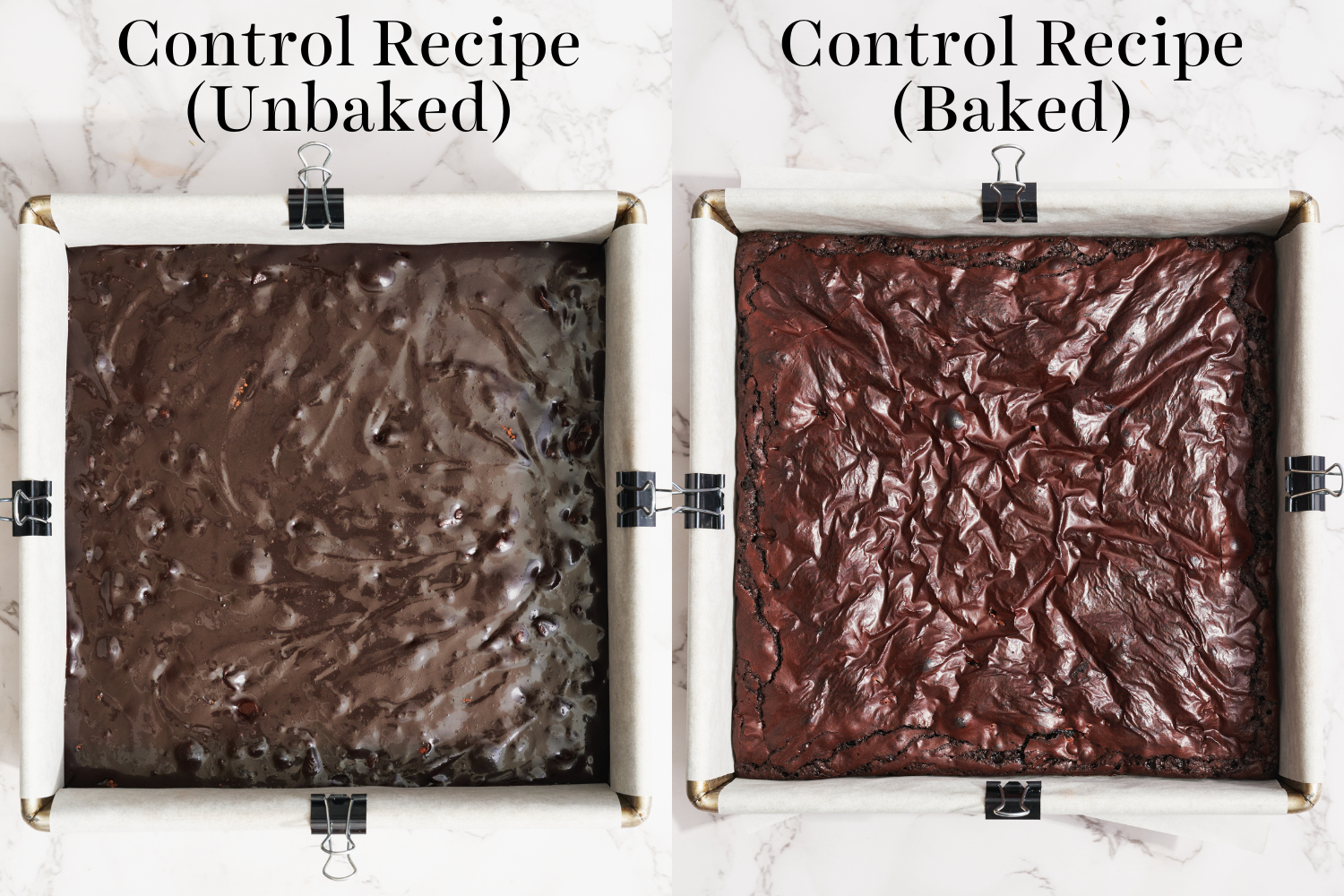
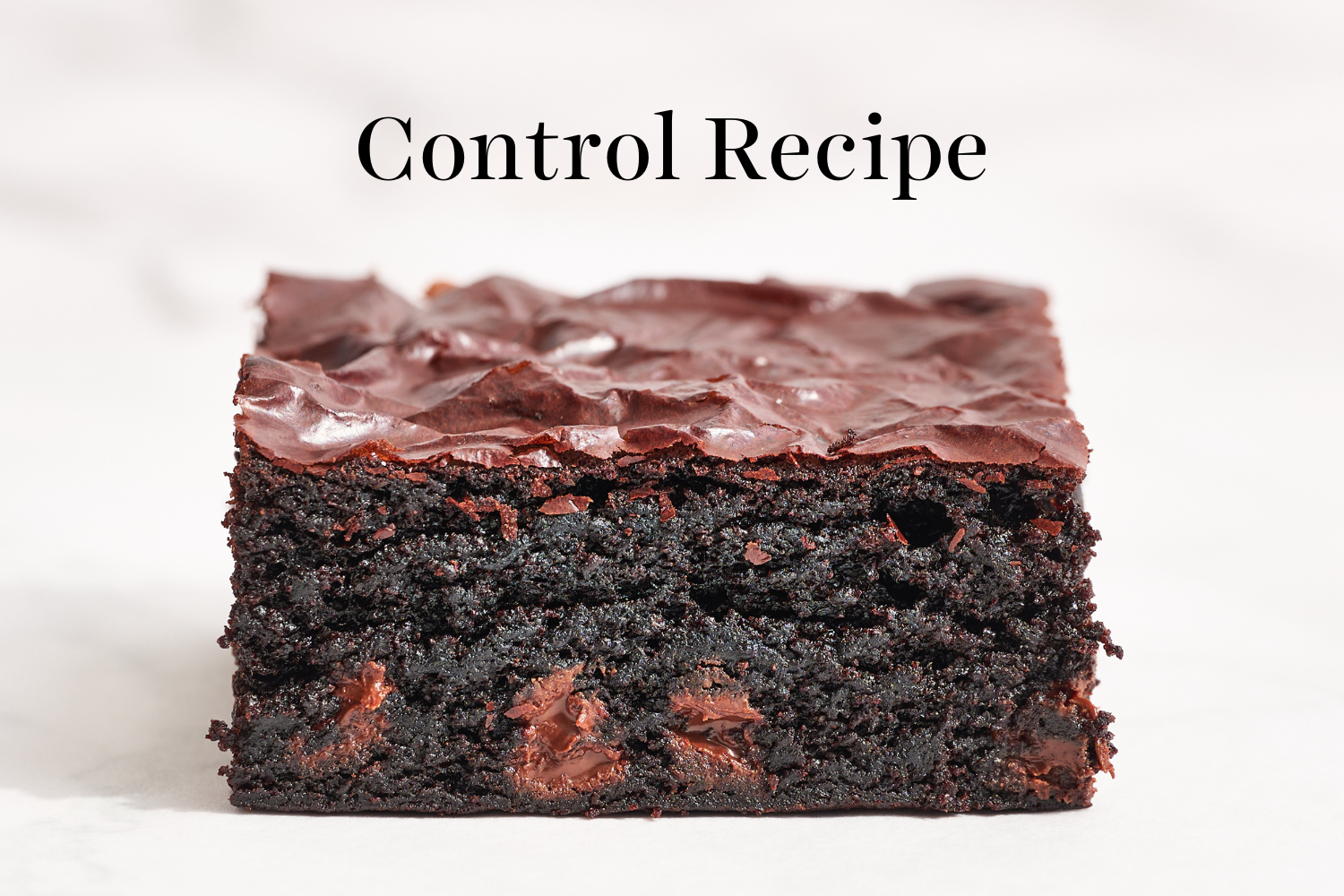
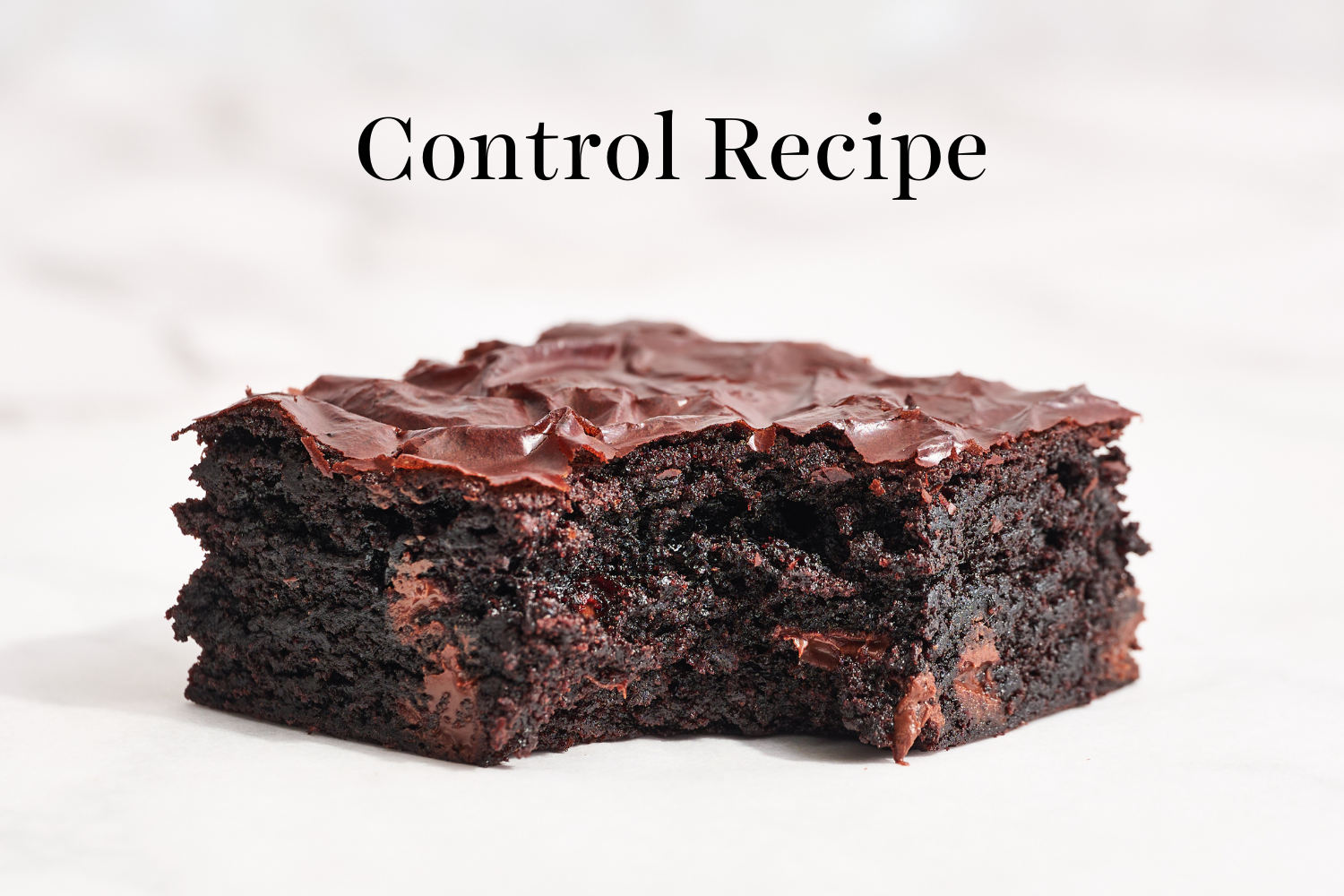
What Happens if You Lower The Amount Of Sugar Called For in Brownies?
For this experiment, we decreased the sugar in the control brownie recipe by 50%.
The batter texture was thick and dark in color. The batter filled up less height in the pan than the control recipe, which makes sense with a lowered amount of sugar.
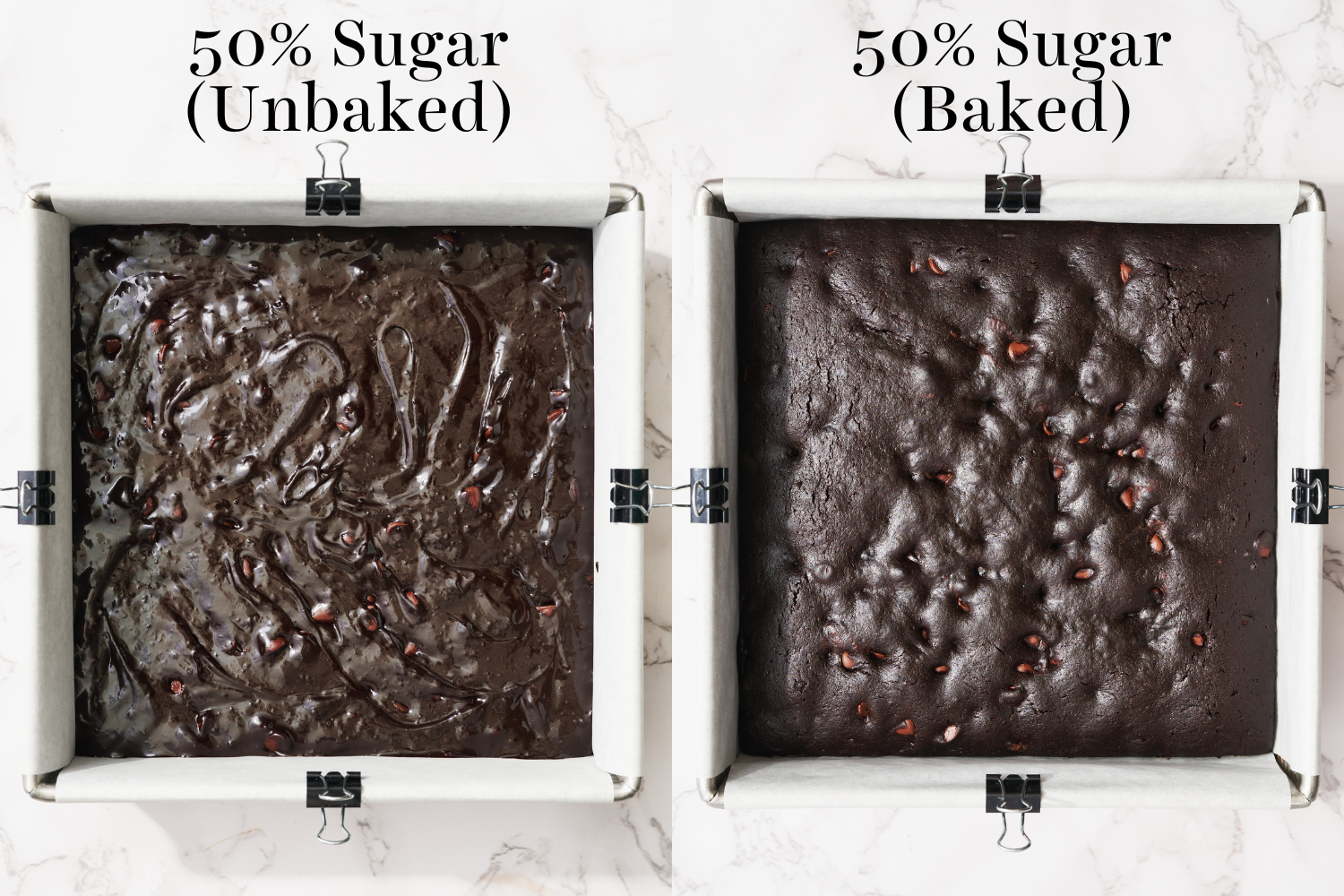
50% Sugar Results: This batch was dry and very crumbly. They tasted like unsweetened chocolate, and they stuck to the roofs of our mouths while eating them. There was no shiny crust at all, so the texture remained the same throughout the bite. The middle pieces of this batch were significantly thicker than the other two, while the edges remained thinner. Not one of our taste testers enjoyed this batch!
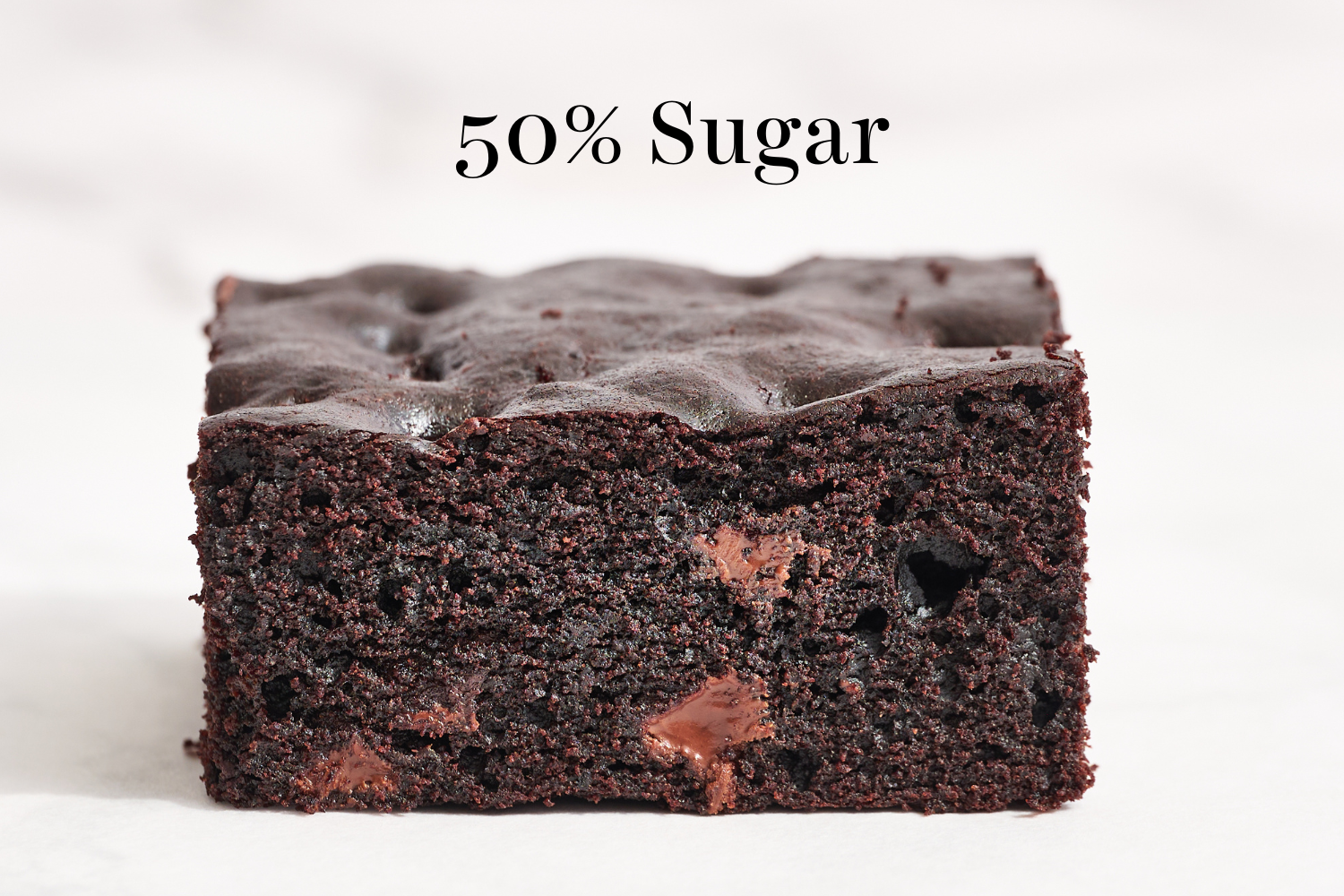
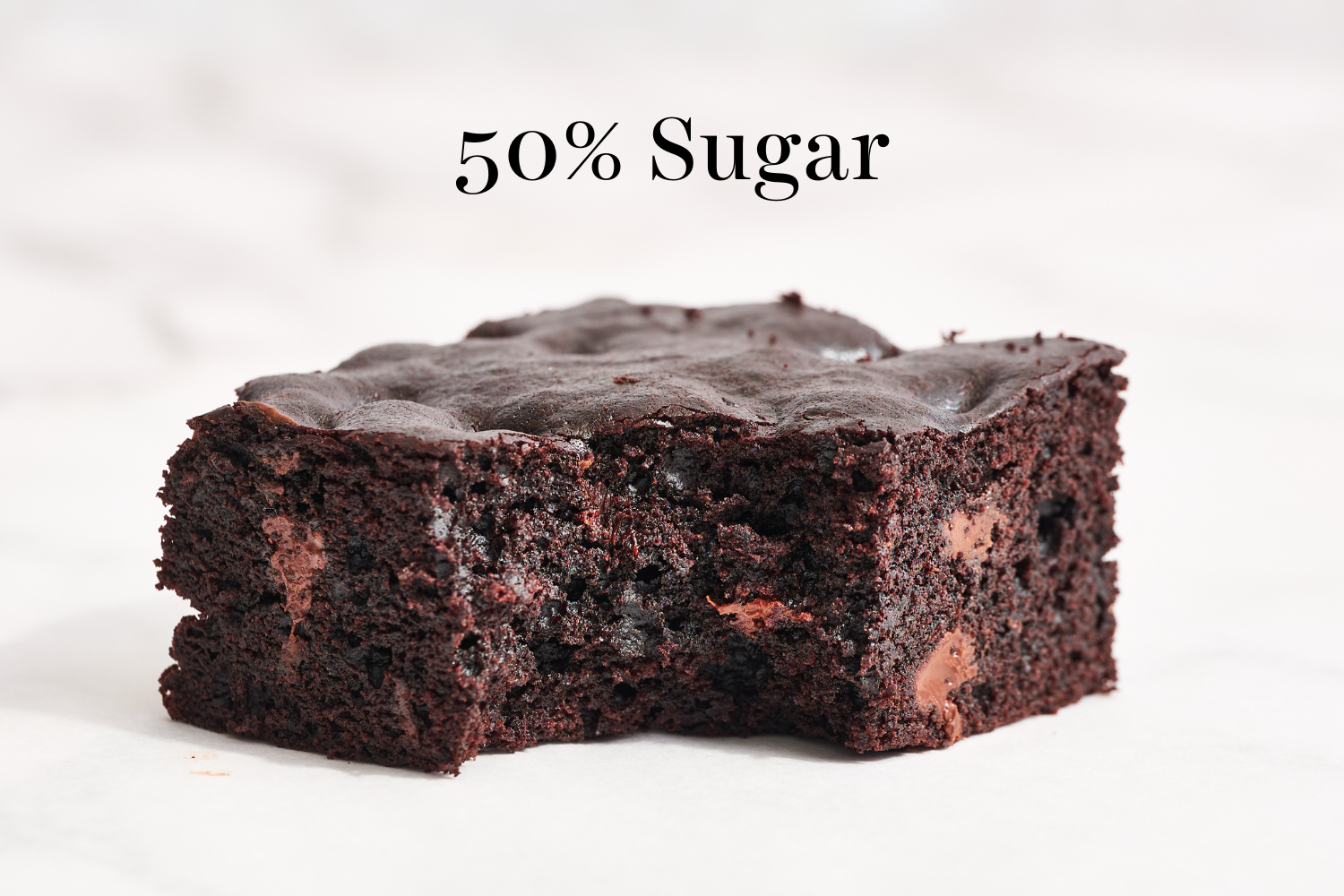
What Happens if You Increase The Amount Of Sugar Called For In Brownies?
Here, we increased the sugar in the control brownie recipe by 25%.
This batter was lighter in color and filled up a taller height of the brownie pan.
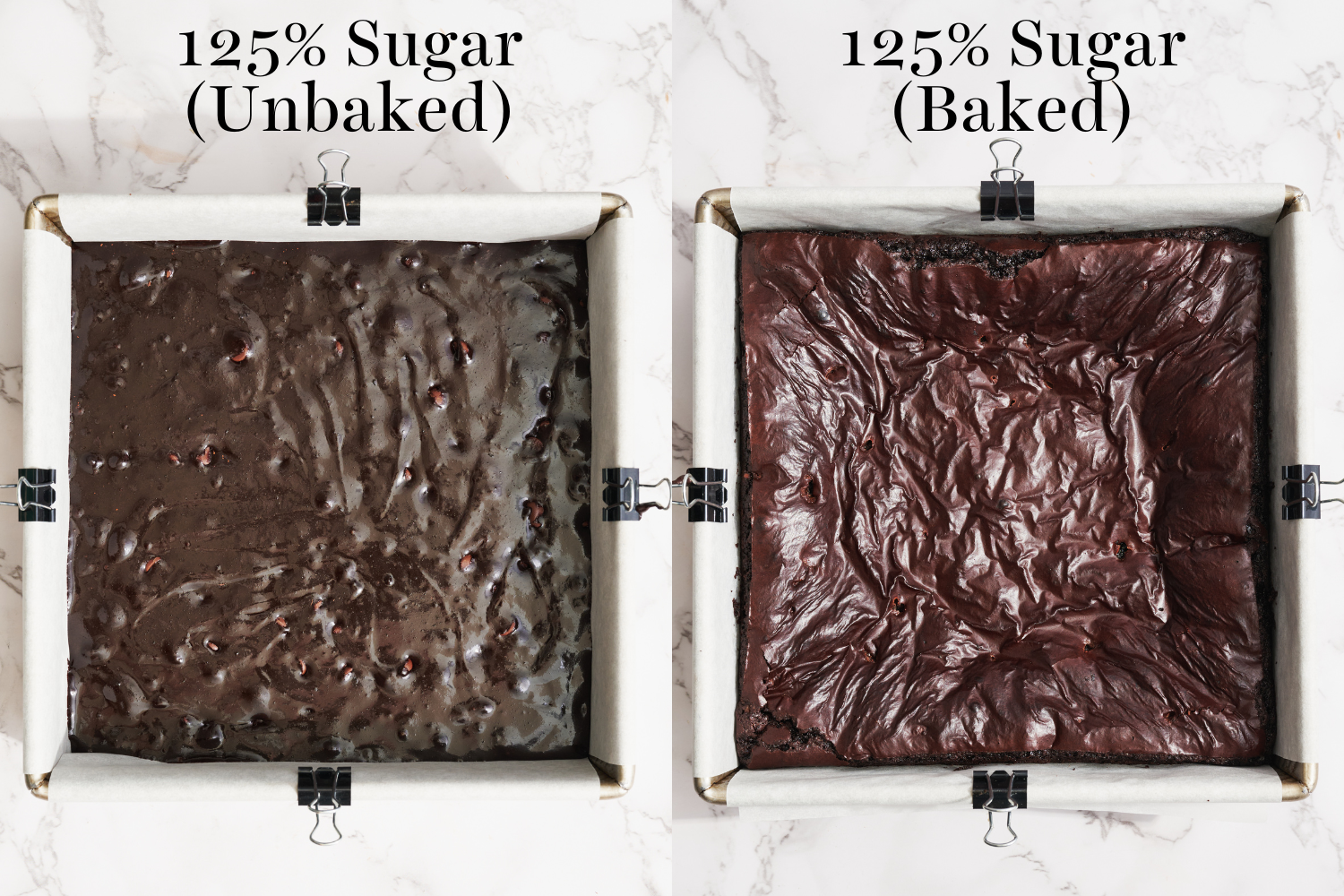
125% Sugar Results: This batch developed the shiniest crust – but it was a thicker shiny crust, almost meringue-like in texture. They sank the most in the middle upon cooling, even caving in slightly at the center. These brownies had a very tender texture, were very soft and gooey, and the crust shattered as it was sliced. They were also, of course, the sweetest of the bunch, but they weren’t unpleasantly sweet to eat. The soft, tender, almost candy-like chewy texture with the thick crust made these a favorite among the younger taste-testers!
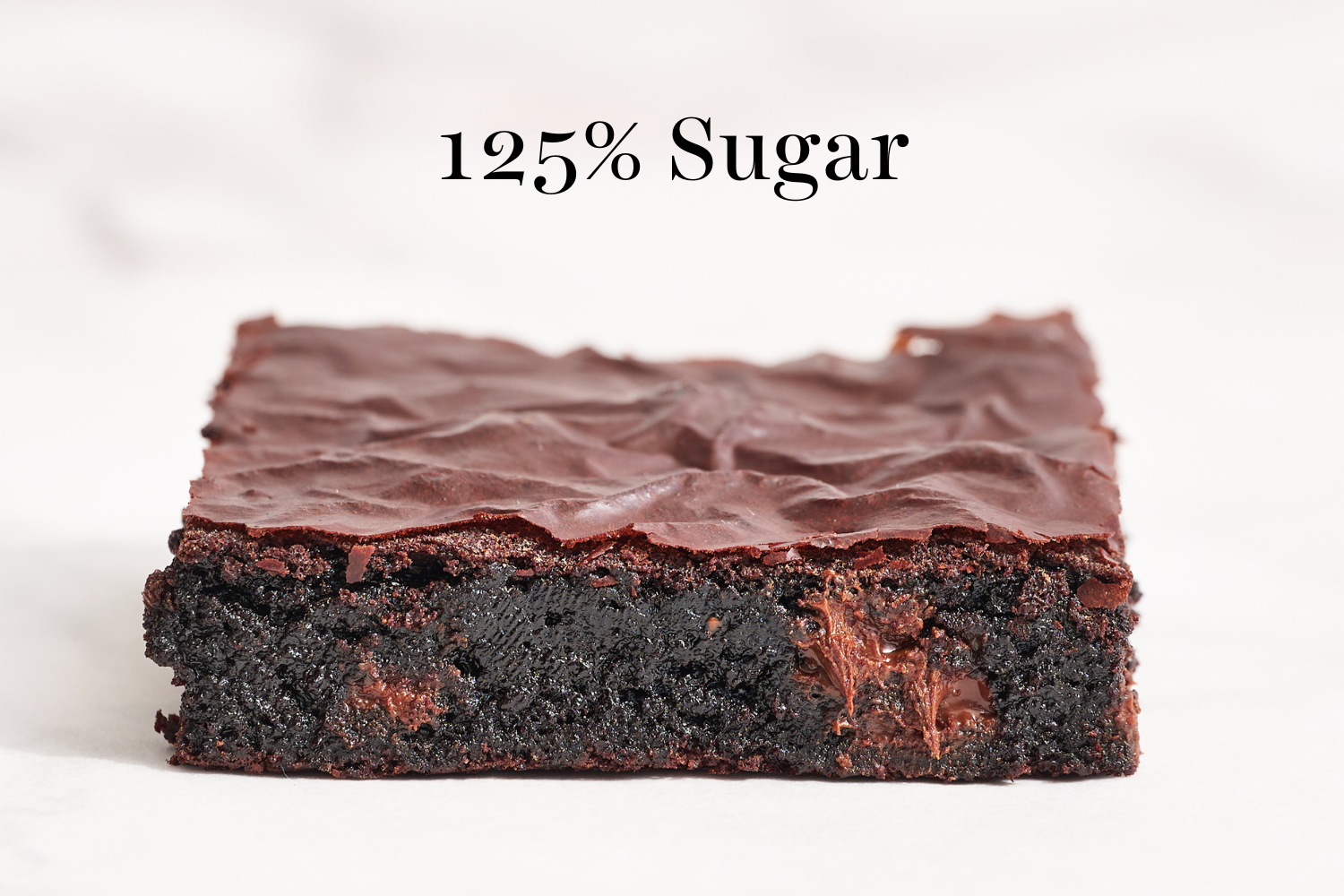
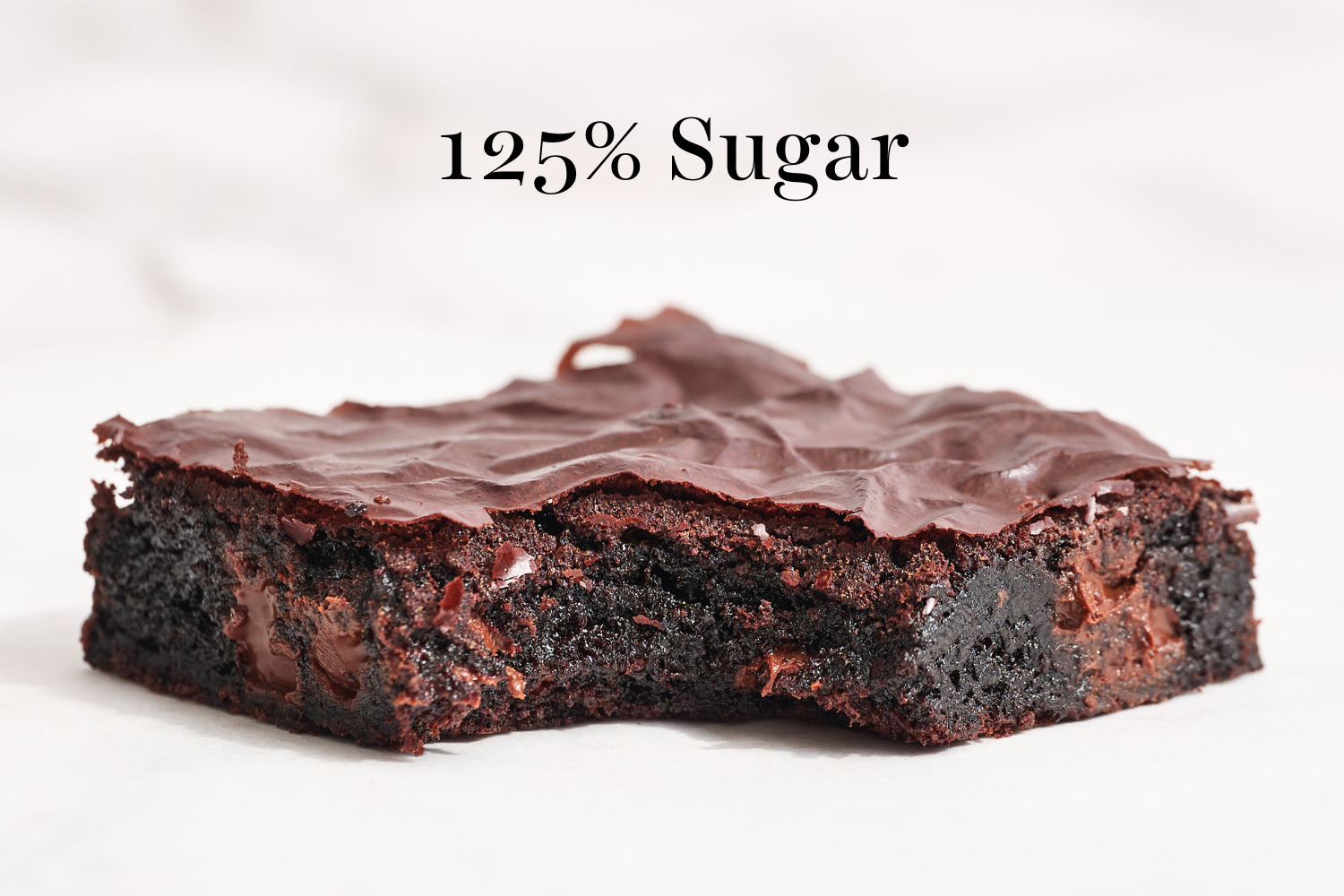
Final Takeaways of Reducing Sugar in Brownies
Sugar is a crucial ingredient in baking, contributing so much to the taste and texture of baked goods. When the ratio of ingredients is correctly balanced, the texture, height, and flavor will be perfect. Reducing sugar in brownies will not only alter sweetness but their texture and appearance as well. Too much sugar and your brownies will develop a thick, meringue-like crust on the top, a super gooey center, and be very sweet. Too little sugar and your brownies will be super dry, dense, and bitter and won’t keep fresh for as long.
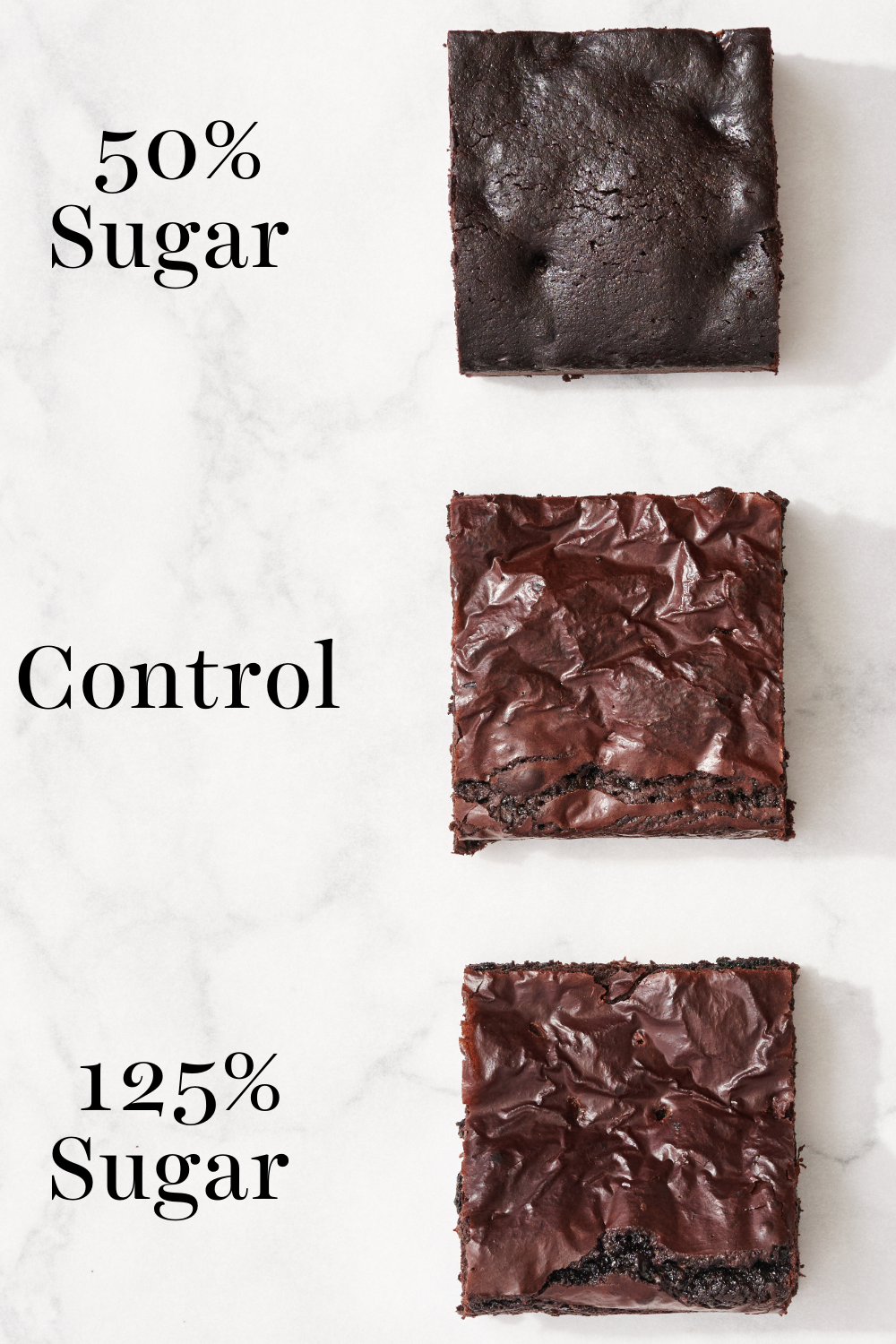

How Can I Reduce the Sweetness Without Lowering the Sugar?
Of course, you’re always free to experiment with reducing sugar in brownies as you wish – just consider our findings above, knowing that your final taste, texture, and appearance will change with altering the sugar content. I always recommend making a new recipe as written once so you have a baseline to compare to, and then make changes one at a time, little by little until you’re happy with the result.
Here are a couple of pointers for reducing sweetness while maintaining the sugar level:
- Salt: Increase the salt level to help balance the sweetness. Also, be sure you’re using the right type of salt in your brownies. Learn more about different types of salt here.
- Chocolate: Use bittersweet or dark chocolate chips instead of semisweet.
- Use Dutch-process cocoa powder: This often has a smoother and richer chocolate flavor.
FAQs on Sugar Types in Brownies
- Can I use brown sugar in brownies? Yes! Brown sugar contains more moisture than granulated sugar, so this can alter the texture and appearance of your brownies. It can be more challenging to achieve that shiny crust on top with brown sugar. Make sure there are no lumps in your brown sugar.
- Can I use powdered sugar in brownies? Yes, I recommend checking out my How to Make Brownies with Shiny Thin Crust article for more details on this.
Have you ever experimented with reducing the sugar in brownies? Let me know how it went in the comments below!
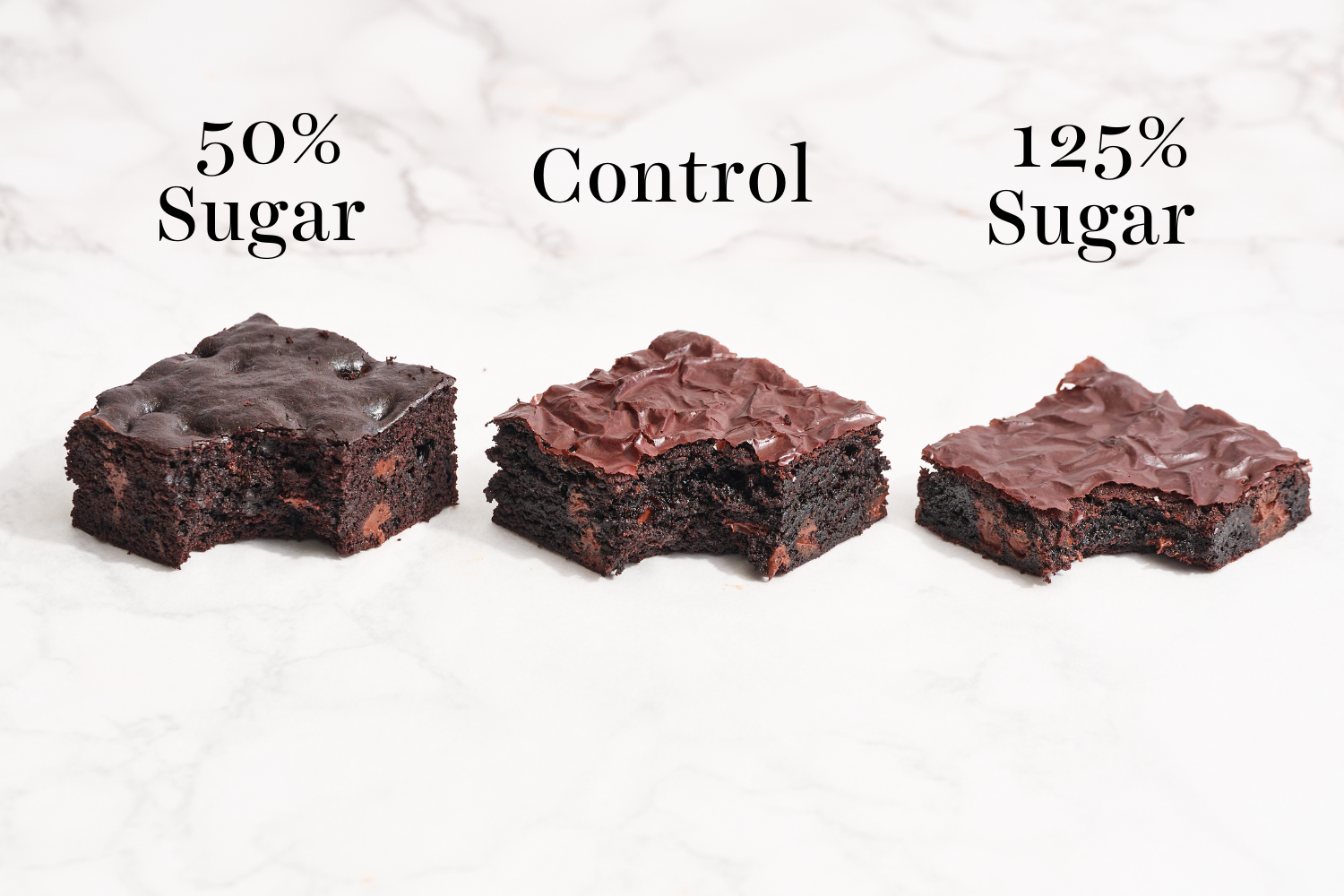
More Science of Baking Articles:
- Sugar in Cookies Experiment
- Sugar in Cupcakes Experiment
- Baking Soda vs. Baking Powder
- How to Cream Butter & Sugar
- Butter vs. Oil in Baking
Photos by Joanie Simon.
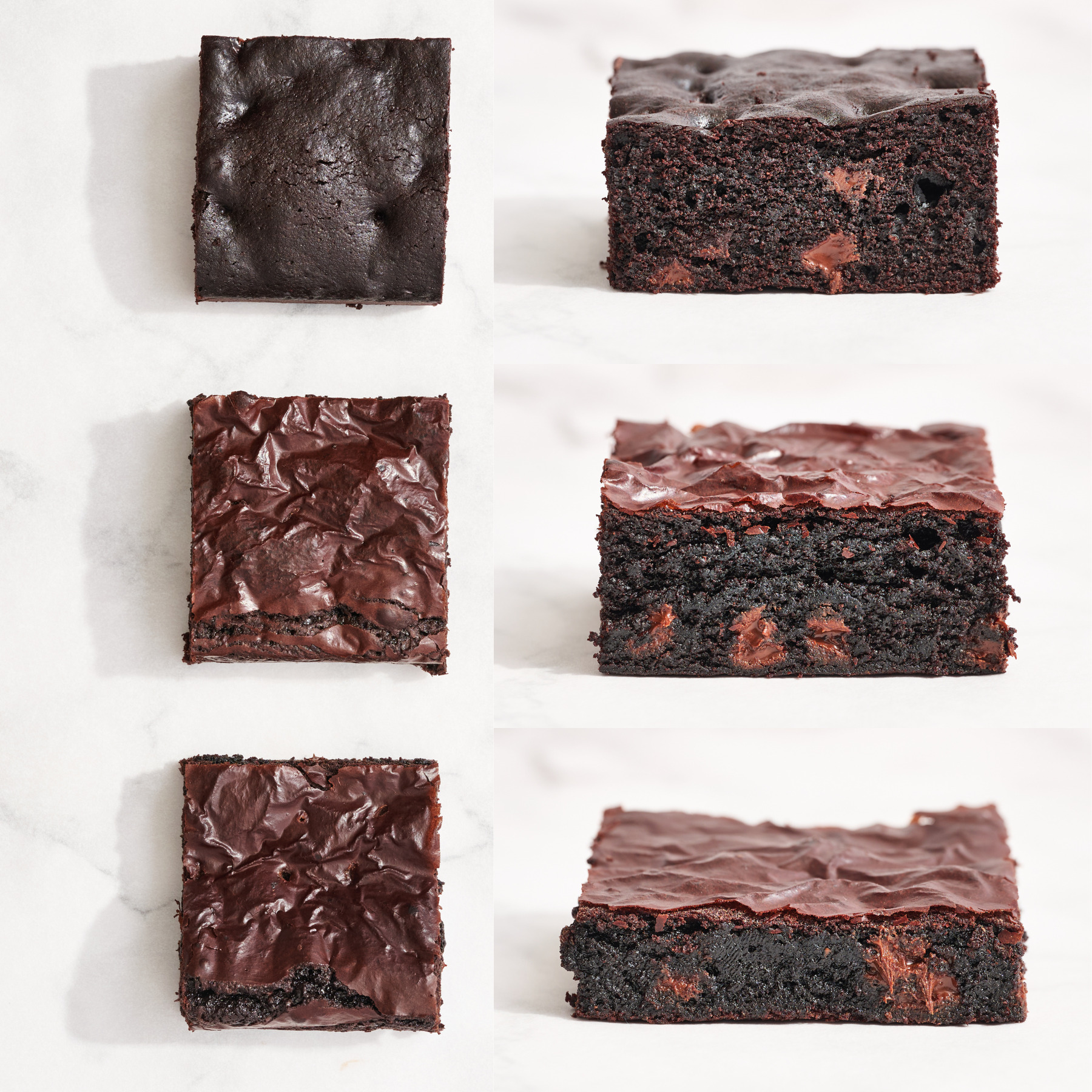

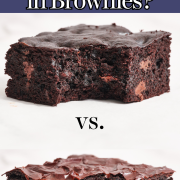
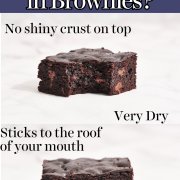
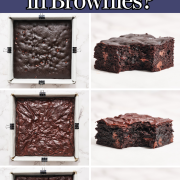

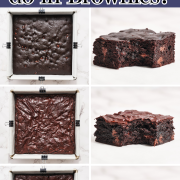
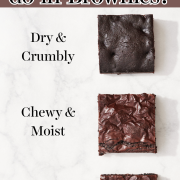

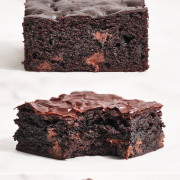


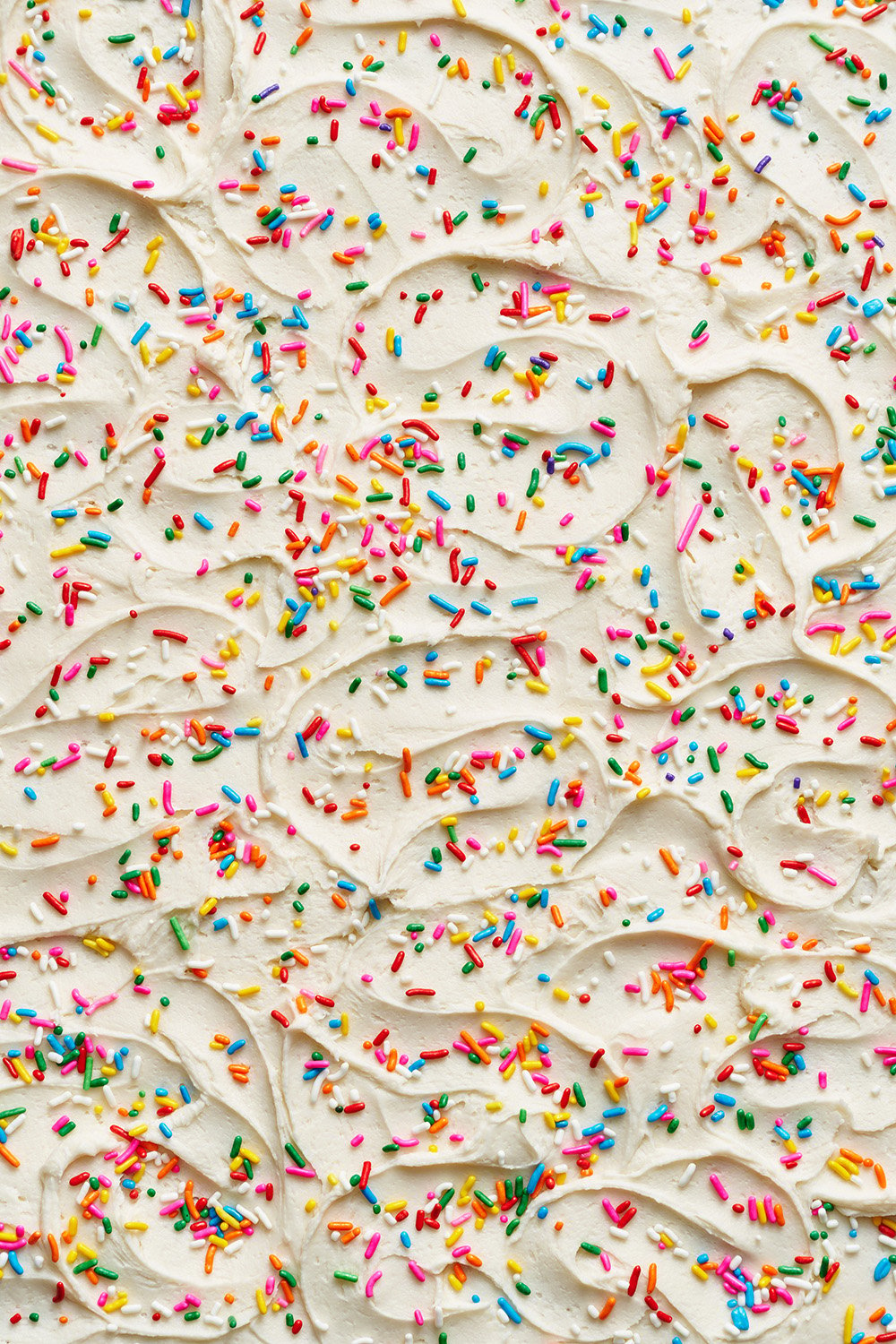
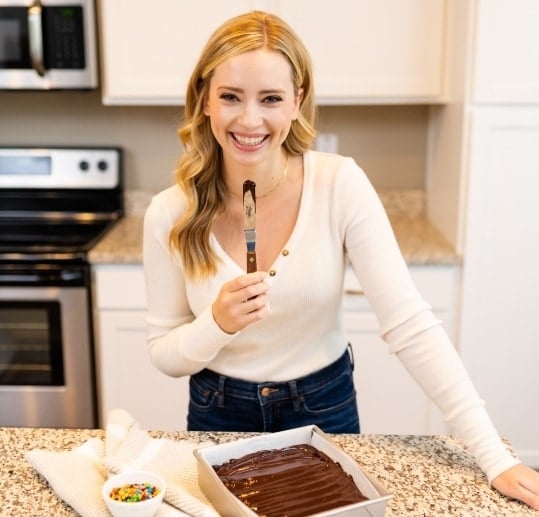


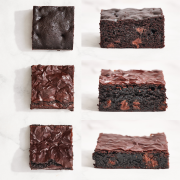
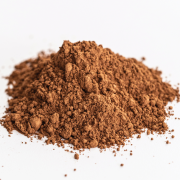
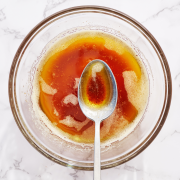
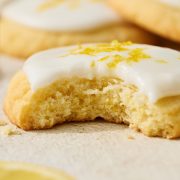

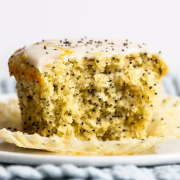
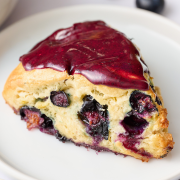








Swapped the Sugar for Allulose and it was absolutely god awful
That’s the perfect explanation why my brownies never shine even though I thin my eggs and sugar for half an hour! Thank you so much
I did reduce the amount of sugar by 50% and yes the result was exactly like the 50% sugar brownies in this article, and I still try to figure out about how to make less sweet brownies with the shiny top…….. This article helps alot, thank u
So glad this was helpful, Inra!
I’ve used unsweetened chocolate in some of the brownie recipes on this site for just the melted chocolate (without altering the amount of granulated sugar) and it hasn’t changed the texture for me! I don’t know if it works with every recipe, though, or if different brands of unsweetened chocolate would have a different effect.
So glad that’s worked for you, Shehla! That’s a great way to reduce the sugar just slightly, without greatly impacting the texture of your brownies 🙂
I can see that 50% reduction is drastic, it would be interesting to try a 75% reduction compared with a control batch.
Hi Janet! It would be great to try that too! Let us know what you think if you experiment with that 🙂
I just had cataract surgery, so it will be a while, LOL, as I cannot see yet. I will have to continue to wear distance glasses. This is so weird, to have everything blurry! But when I try the experiment, I will certainly let you know!
All the best for a speedy recovery, Janet!
Thank you so much! All is goins well with the healing process, that’s all that matters.